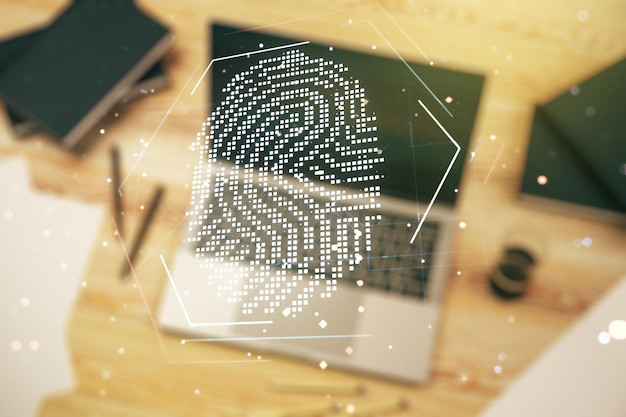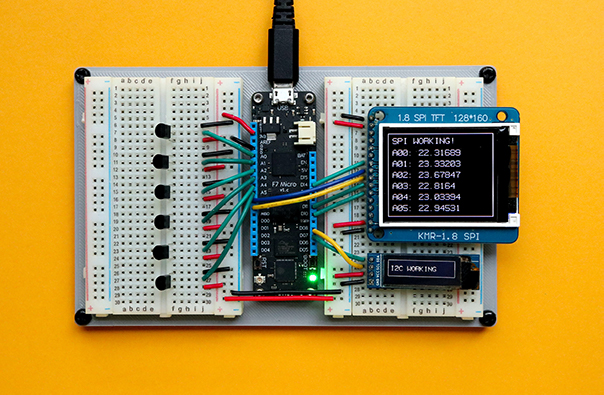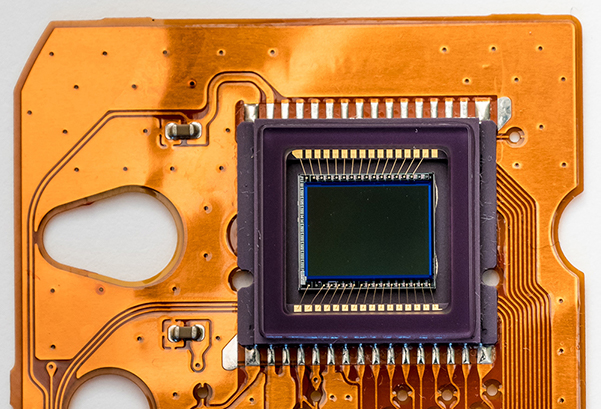Sensors Modern Technology Electronics 2023

In today’s world, technology has become an essential part of our lives, and one of the most important aspects of modern technology is sensors. Sensors are everywhere, from the smartphones we use to the cars we drive, and they play a crucial role in making our lives easier and more efficient. In this article, we’ll take a closer look at sensors, what they are, how they work, and the different types of sensors available today.
Table of Contents
1. What are sensors1

Sensors are electronic devices that convert physical or environmental inputs into measurable electrical signals. They act as the interface between the physical and digital worlds, enabling machines and systems to interact with their surroundings. These devices can detect a wide range of parameters such as temperature, pressure, proximity, motion, light, and more. By providing real-time data, sensors enable systems to make informed decisions and take appropriate actions.
Importance of sensors

Sensors are of utmost importance in various fields, including automotive, healthcare, consumer electronics, industrial automation, and environmental monitoring. They enhance efficiency, safety, and accuracy in processes by providing precise and reliable measurements. With the advancement of technology, sensors have become an integral part of smart devices and Internet of Things (IoT) systems, revolutionizing industries and improving the quality of life.
How do sensors work?

Sensors employ different principles to detect and measure physical quantities. For example, temperature sensors use the change in electrical properties of materials with temperature variations, while pressure sensors utilize the deformation of a sensing element under the applied pressure. Proximity sensors detect the presence or absence of objects, and motion sensors rely on detecting changes in position or movement. Light sensors, on the other hand, measure the intensity of light. Each sensor type has its unique working principle tailored to its intended application.
Role of sensors in everyday life
Sensors have become an integral part of our daily lives, often without us realizing their presence. In smartphones, sensors enable features like automatic screen rotation, fingerprint recognition, and ambient light adjustment. In the automotive industry, sensors contribute to advanced driver assistance systems (ADAS), enhancing safety and enabling autonomous driving capabilities. Sensors are vital in healthcare, enabling accurate monitoring of vital signs and facilitating early disease detection.
Advancements in sensor technology
Over the years, sensor technology has witnessed significant advancements, leading to more sophisticated and versatile sensors. Miniaturization has made sensors smaller and more portable, allowing integration into various devices and wearables. Additionally, improvements in accuracy, sensitivity, and response time have enhanced their performance. Furthermore, the integration of sensors with wireless communication technology has facilitated seamless data transmission and remote monitoring, contributing to the growth of smart systems and IoT applications.
2. Types of Sensors

There are various types of sensors, each designed to detect specific physical parameters. Let’s explore some common types:
Temperature sensors
Temperature sensors measure the degree of heat or coldness in a given environment. They are widely used in HVAC systems, industrial processes, weather monitoring, and medical applications.
Pressure sensors
Pressure sensors measure the force exerted on a surface due to the applied pressure. They find applications in automotive tire pressure monitoring systems, industrial equipment, and medical devices.
Proximity sensor.s
Proximity sensor.s are capable of identifying the existence or absence of objects within a specific distance range. They are utilized in automatic doors, touchless faucets, and object detection systems.
Motion sensor.s
Motion sensor.s detect movement or changes in position. They are commonly found in security systems, gaming consoles, and automatic lighting systems.
Light sensor.s
Light sensor.s measure the intensity of light in their surroundings. They are used in cameras, automatic brightness adjustment in displays, and ambient light detection in smartphones.
3. Applications of Sensor.s
Sensor.s find extensive utility across diverse sectors, serving a multitude of purposes in various industries. Let’s explore a few key sectors where sensor.s play a crucial role:
Automotive industry
In the automotive industry, sensor.s are utilized for vehicle diagnostics, engine control, ADAS, and monitoring tire pressure. They enhance safety, improve fuel efficiency, and enable advanced driver assistance features.
Healthcare sector
In healthcare, sensor.s are used for monitoring vital signs, such as heart rate, blood pressure, and oxygen levels. They enable continuous patient monitoring, remote healthcare services, and early detection of abnormalities.
Consumer electronics
Sensor.s are integrated into smartphones, wearables, and smart home devices, enhancing their functionality and user experience. They enable features like facial recognition, gesture control, and activity tracking.
Industrial automation
In industrial settings, sensor.s are essential for process control, quality assurance, and equipment monitoring. They enable precise measurement, ensure product consistency, and enhance overall operational efficiency.
Environmental monitoring
Sensor.s play a crucial role in environmental monitoring, such as air quality sensing, water quality analysis, and weather forecasting. They help in detecting pollution levels, monitoring climate changes, and facilitating environmental conservation efforts.
4. Choosing the Right Sensor
When selecting a sensor for a specific application, several factors need to be considered:
Considerations for sensor selection
Accuracy and precision: The sensor should provide accurate and precise measurements suitable for the application’s requirements.
Environmental factors: Consider the operating conditions, such as temperature, humidity, and potential exposure to harsh environments.
Cost and scalability: Evaluate the cost-effectiveness of the sensor and its scalability potential for future needs.
Integration with existing systems: Ensure compatibility and ease of integration with the existing infrastructure and communication protocols.
5. Future Trends in Sensor Technology
The field of sensor technology continues to evolve, paving the way for exciting future possibilities. Some emerging trends include:
Internet of Things (IoT)
The integration of sensor.s with IoT systems is expected to accelerate, enabling seamless connectivity and data exchange between devices. This will lead to smarter and more efficient systems in various domains, from smart homes to smart cities.
Wearable sensor.s
Wearable devices equipped with sensor.s are becoming increasingly popular, enabling health and fitness tracking, as well as personalized monitoring. These sensor.s can provide real-time feedback
Artificial intelligence and machine learning
The combination of sensor technology with artificial intelligence (AI) and machine learning (ML) algorithms opens up new possibilities for data analysis and pattern recognition. Sensor.s equipped with AI and ML capabilities can learn from the data they collect, enabling predictive maintenance, anomaly detection, and optimized decision-making.
Energy harvesting sensor.s
Energy harvesting technology aims to power sensor.s using renewable energy sources such as solar, thermal, or kinetic energy. This reduces the reliance on batteries or wired power sources, making sensor.s more sustainable and cost-effective.
Biosensor.s
Biosensor.s are sensor.s that detect biological components or processes. They are extensively used in medical diagnostics, environmental monitoring, and food safety. Advancements in biosensor technology will lead to more accurate and efficient disease detection, personalized medicine, and improved environmental monitoring.
6. Conclusion
In conclusion, sensor.s are indispensable in today’s technological landscape. They enable machines, systems, and devices to interact with and respond to their environment effectively. From temperature and pressure sensor.s to proximity, motion, and light sensor.s, each type plays a vital role in various applications across industries. As technology continues to advance, we can expect even more sophisticated sensor.s that contribute to safer, smarter, and more efficient systems. Sensor.s have undoubtedly revolutionized the way we live, work, and interact with technology.
FAQs (Frequently Asked Questions)
1. How accurate are sensor.s?
Sensor.s vary in accuracy depending on their design and intended use. However, modern sensor.s can provide highly accurate measurements within their specified range.
2. Can sensor.s be used in extreme environments?
Yes, some sensor.s are specifically designed to operate in extreme environments, such as high temperatures or high-pressure conditions. These ruggedized sensor.s are used in industries like aerospace, oil and gas, and deep-sea exploration.
3. Can sensor.s be calibrated for increased accuracy?
Yes, sensor.s can be calibrated to ensure their accuracy over time. Calibration involves comparing sensor readings against a known reference to make necessary adjustments.
4. How do sensor.s contribute to energy efficiency?
Sensor.s enable systems to gather real-time data about their surroundings, allowing for precise control and optimization. This leads to energy-efficient operation, as systems can adjust parameters based on actual conditions rather than relying on fixed settings.
5. Are sensor.s vulnerable to cybersecurity threats?
As sensor.s become more interconnected in IoT systems, cybersecurity becomes a crucial consideration. It’s essential to implement robust security measures to protect sensor data from unauthorized access and potential threats.
Final Thoughts
Sensor.s have revolutionized our interaction with technology and reshaped our engagement with the surrounding environment.. Their ability to detect and measure physical parameters empowers various industries and enhances our daily lives. As we continue to push the boundaries of technology, sensor.s will continue to evolve, enabling even more innovative applications and advancements. So next time you use a smart device, drive a car with ADAS features, or experience personalized healthcare monitoring, remember that sensor.s are the silent heroes behind these remarkable capabilities.
MAY YOU LIKE : Electronics The Ultimate Guide for Beginners


6 thoughts on “Sensors Modern Technology Electronics 2023”